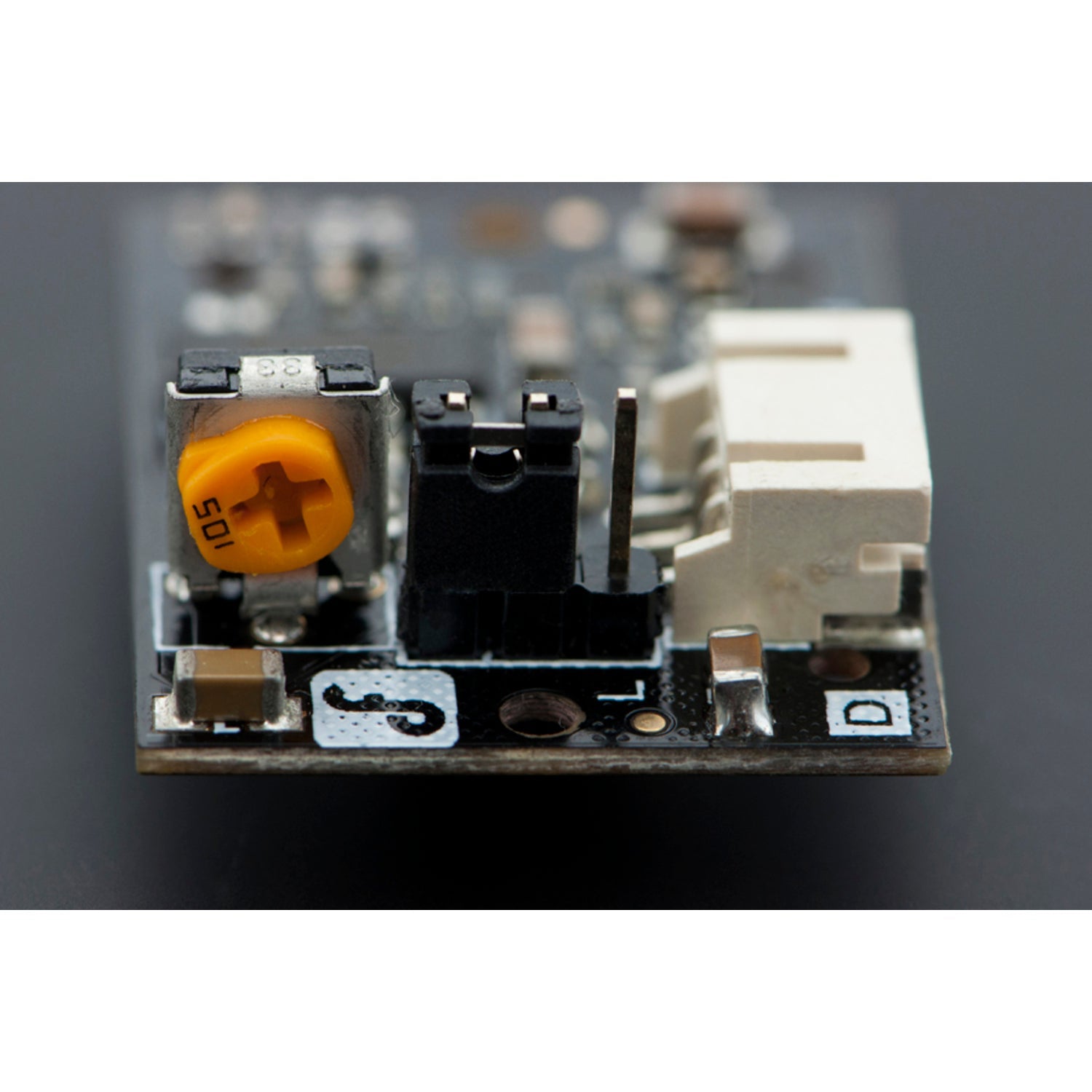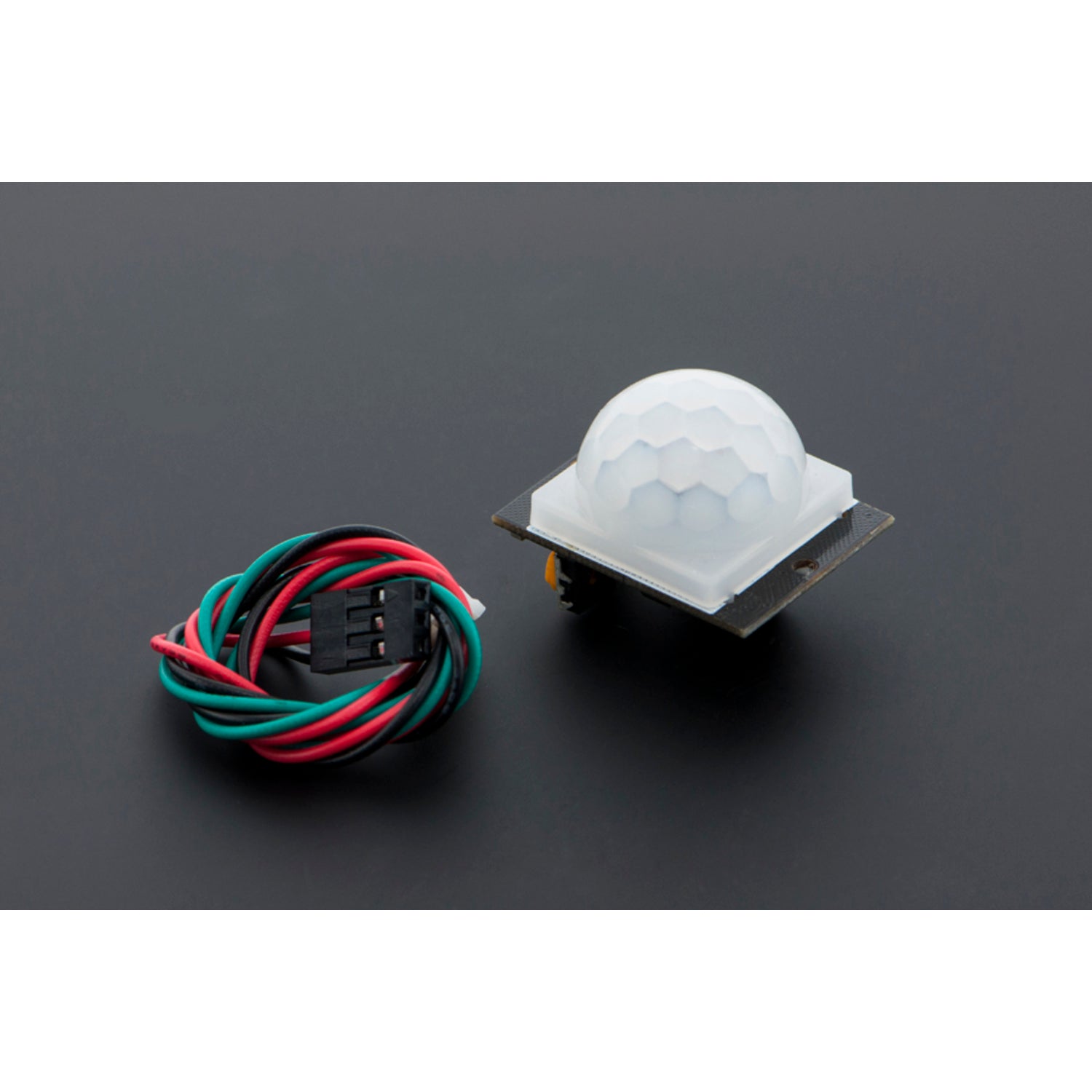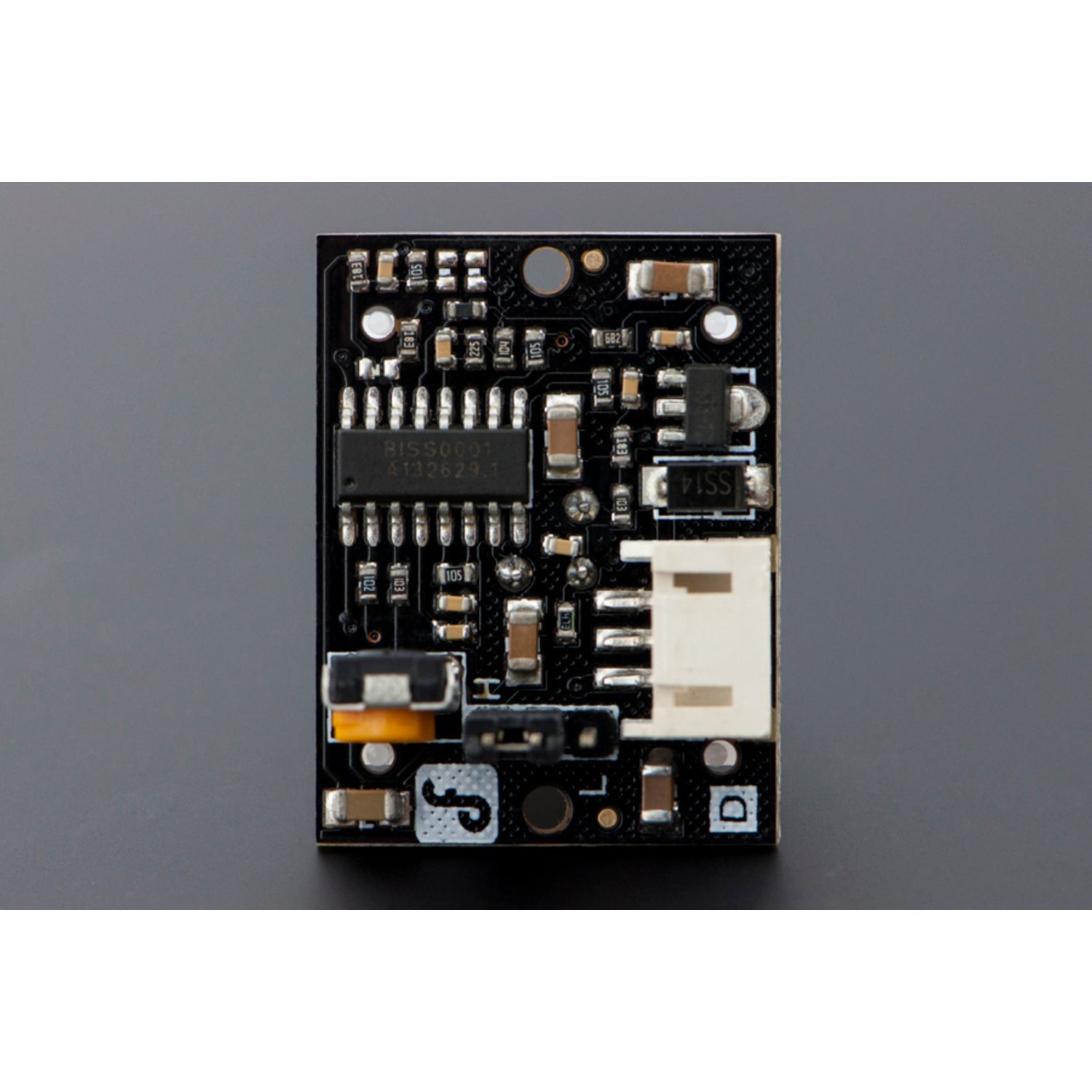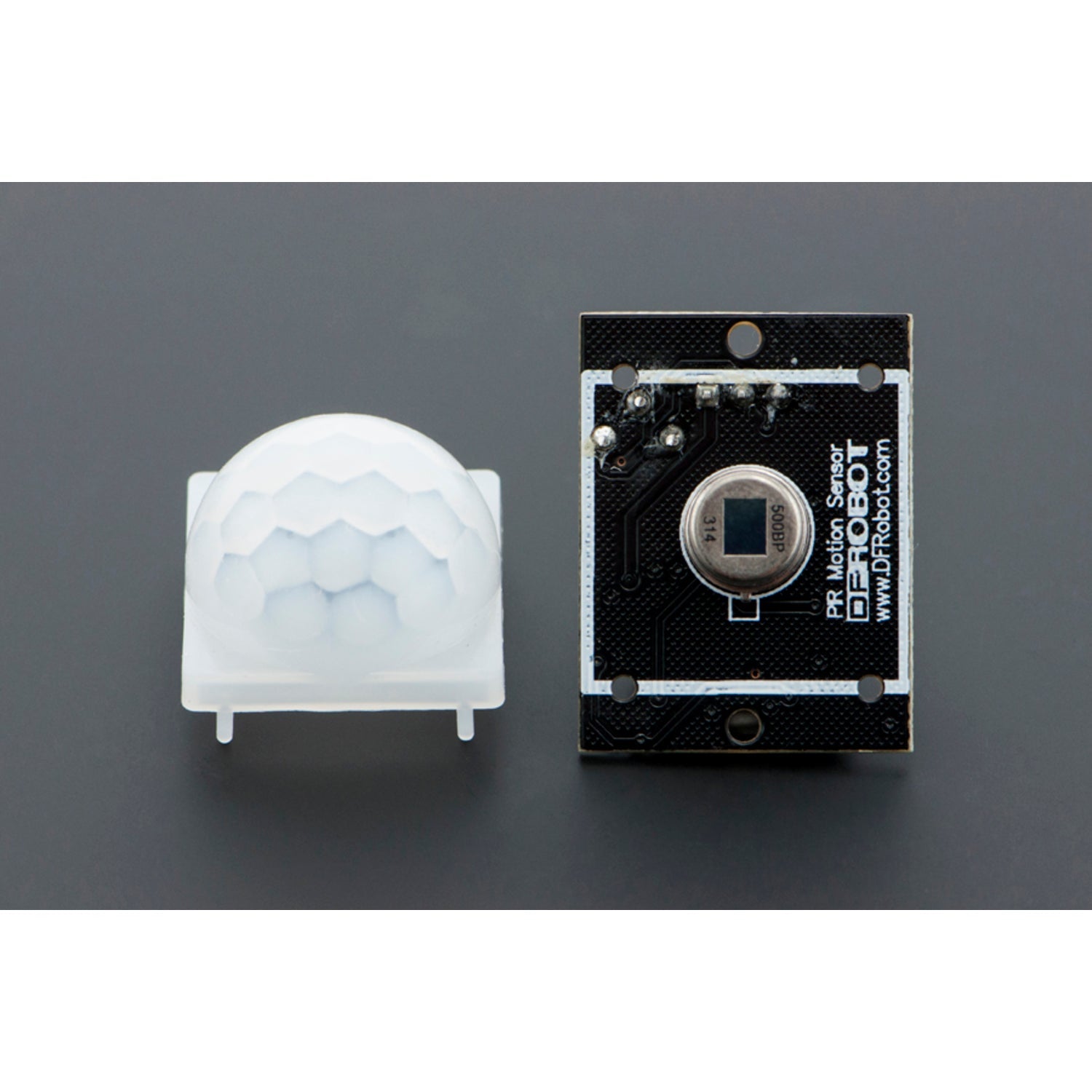This easy-to-use Arduino motion sensor is a game-changer for home security and automation projects. Just power it up, wait 1 - 2 seconds for it to capture a still-room snapshot, and it's ready to detect movement. When something moves within its detecting angle, the 'alarm' pin goes low. It senses infrared heat, detecting energy emitted by humans, pets, and more, comparing it with the snapshot to trigger an alert. Ideal for home alarm security audits, this sensor helps you understand its efficiency and working method through hands-on experiments. Infrared motion detectors are widely used in various appliances worldwide. It's perfect for Arduino or home automation projects that need automated motion feedback, like automatic trigger light systems that save power by turning lights on when someone is nearby and off when the area is empty. It can also trigger other actuators such as door openers or pet feeders. The sensing delay is adjustable via the potentiometer on the back of the sensor. To simplify usage, it features a Gravity Interface for plug-and-play functionality. The IO expansion shield is the best companion for connecting it to your Arduino. Moreover, it can work at 3.3V, making it compatible with Raspberry Pi, Intel Edison, Joule, and Curie. Specification: Type - Digital; Supply Voltage - 3~5V; Current - 50µA; Working temperature - 0°C~+70°C; Output level (HIGH) - 4V; Output level (LOW) - 0.4V; Detect angle - 110 Degree; Detect distance - 7 meters; Size - 28mmx36mm (1.1 in x 1.4 in); Weight - 25g. Documents: Wiki (Digital Infrared motion sensor). Shipping List: Digital infrared Motion Sensor x1, Digital Sensor Cable (SKU:FIT0011) x1.





Using this motion sensor is a breeze. First, power it up and give it 1 - 2 seconds to take a snapshot of the still room. Once it's set, it'll start detecting any movement. If you want to adjust the sensing delay, turn the potentiometer on the back of the sensor. To connect it to your Arduino, use the IO expansion shield with the provided digital sensor cable. It also works well with Raspberry Pi, Intel Edison, Joule, and Curie. When using it for a home automation project like an automatic light system, place it in a spot where it can cover the area you want to monitor. Keep in mind that the sensor has a detecting angle of 110 degrees and can detect up to 7 meters away. For maintenance, keep it clean and avoid exposing it to extreme temperatures outside the 0°C - 70°C range. That's all you need to know to get the most out of this great motion sensor.